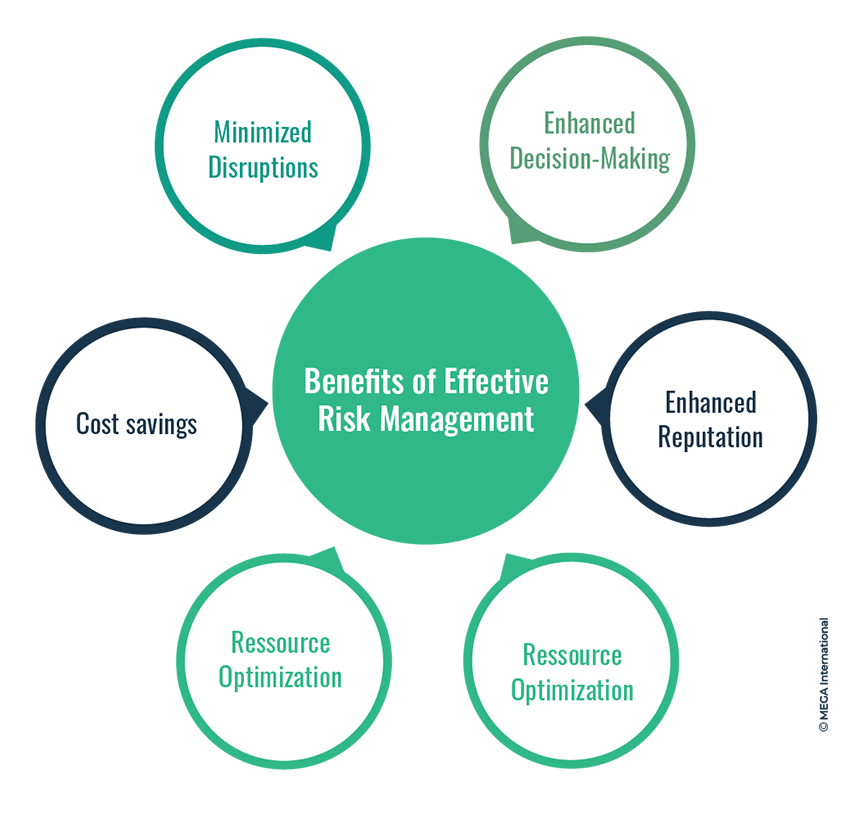The Critical Importance of Risk Management in Monetary Decision Making
The Critical Importance of Risk Management in Monetary Decision Making
Blog Article
The Vital Value of Risk Management in Getting Organizational Goals
In the swiftly advancing service landscape, the capacity to browse unpredictability has actually ended up being an important. This is where Risk Management steps in, providing a structured approach to recognizing, assessing, and mitigating prospective obstacles to progress. It's more than just a protective procedure - it's a calculated tool, cultivating resilience and technology. As we explore the vital duty of Risk Management in attaining business goals, one can't assist yet wonder: how does this translate into real-world success?
Recognizing the Principle of Risk Management in Company

The Indispensable Duty of Risk Management in Strategic Planning
Incorporating Risk Management right into strategic preparation functions as a safeguard for organizations, securing their long-lasting plans with a strong foundation of readiness and strength. It operates as the company's radar, detecting potential dangers and susceptabilities that could interfere with the path towards accomplishing their stated objectives. Risk Management supplies a framework for anticipating unpredictabilities and developing suitable responses, making certain the organization's survival and prosperity even despite misfortune. By incorporating Risk Management into strategic planning, organizations can transform these uncertainties into chances for development and innovation. This calculated interweaving of Risk Management promotes flexibility, making organizations much more durable and enabling them to browse the ever-changing business landscape with confidence. Risk Management becomes an indispensable device in strategic preparation, instrumental in safeguarding lasting success.

Methods for Identifying, Assessing, and Prioritizing Threats
Navigating the complicated landscape of dangers requires the application of particular strategies for their assessment, prioritization, and recognition. The procedure begins with Risk recognition, using devices such as SWOT evaluation, which assists in identifying potential threats and chances. Next off, Risk evaluation is carried out to ascertain the prospective effect and possibility of each Risk. Tools such as Risk matrices and impact-probability charts are used for this. Finally, dangers are prioritized based upon their potential influence and likelihood, permitting organizations to focus their resources on high-priority dangers. This organized approach ensures an extensive you can look here understanding of the Risk landscape, making it possible for companies to make informed decisions and effectively handle threats to accomplish their goals - importance of risk management.
Securing Business Procedures Via Reliable Risk Management
In business landscape fraught with unpredictabilities, effective Risk Management plays a critical duty in guarding business procedures. It acts as a protective shield, mitigating the damaging impacts of possible dangers and making certain the smooth functioning of all processes. By identifying and evaluating prospective threats, Risk Management allows organizations to develop durable backup strategies. This preventative technique aids in preserving functional stability, also when confronted with unforeseen circumstances. Fundamentally, Risk Management is the lifeline that keeps the business procedures afloat amidst rough waters. It makes certain not just the survival yet the lasting development of a company, making it a crucial device in achieving business objectives. Companies have to invest in comprehensive Risk Management strategies to safeguard their procedures.

Transforming Prospective Risks to Opportunities: The Power of Risk Management
While prospective threats could at first show up as obstructions to organizational success, reliable Risk Management can change them right into chances. A positive technique to run the risk of Management entails recognizing, assessing, and prioritizing dangers to develop strategies that transform them into possible benefits. This procedure necessitates the development of a risk-aware society within the company, motivating people to view dangers as potential stimulants for modification and development, as opposed to simple dangers. importance of risk management. Via this lens, potential hazards become opportunities to innovate, boost processes, and enhance strength. Therefore, by leveraging the power of Risk Management, organizations can not just safeguard their procedures yet additionally spur development and achieve their goals in an unpredictable business environment.
Case Studies: Success Stories of Risk Management Driving Service Objectives
Effective execution of Risk Management techniques has actually generated excellent cause different organizations, underscoring sites the merits of this method. International companies like Microsoft and Google, for example, have actually leveraged Risk Management to decrease risks and exploit opportunities, driving their company goals onward. Microsoft's aggressive Risk Management approach assisted it pivot quickly during the 2020 pandemic, transitioning to remote work smoothly, thereby keeping efficiency. Google, by examining and reducing prospective threats in its cloud-based solutions, has made certain nonstop service, consequently strengthening client count on. These instances illustrate exactly how effective Risk Management can not just steer businesses clear of prospective pitfalls but likewise guide them towards their tactical purposes. Hence, Risk Management is integral to the search of business objectives.
Conclusion
In conclusion, site Risk Management is essentially essential in attaining business objectives. By integrating Risk Management into strategic preparation, companies can much better browse unpredictabilities, guard procedures, and capitalise on possibilities, thereby lining up with lasting purposes.
At its core, Risk Management is the procedure of recognizing, analyzing, and dealing with possible threats that can negatively influence a company's procedures or goals. Next off, Risk evaluation is conducted to establish the potential influence and possibility of each Risk. Threats are focused on based on their potential impact and possibility, permitting organizations to concentrate their resources on critical dangers. By recognizing and analyzing prospective threats, Risk Management allows companies to establish durable backup strategies. A proactive technique to run the risk of Management involves determining, evaluating, and prioritizing threats to design strategies that turn them right into possible benefits.
Report this page